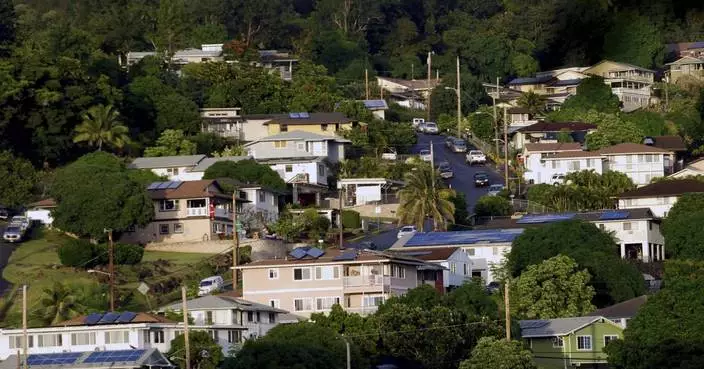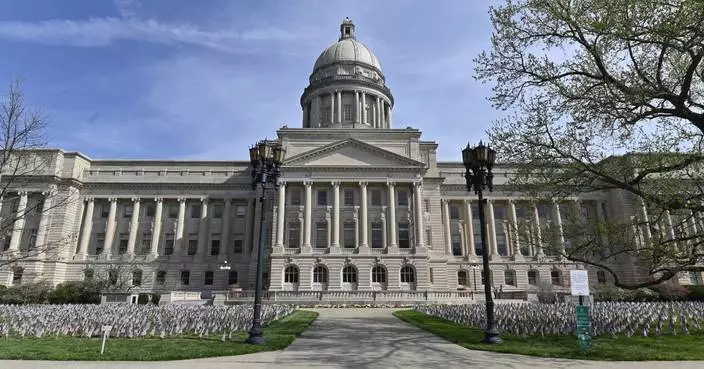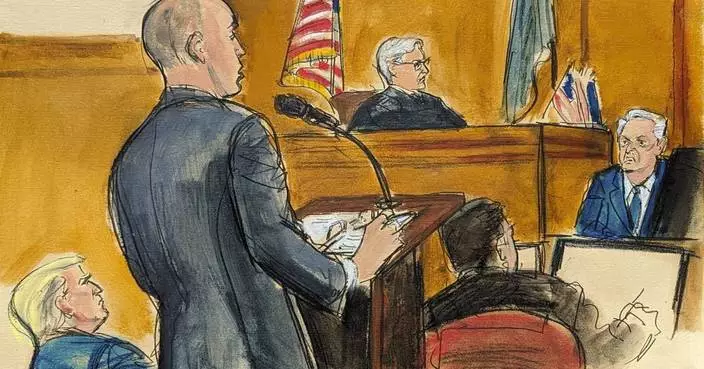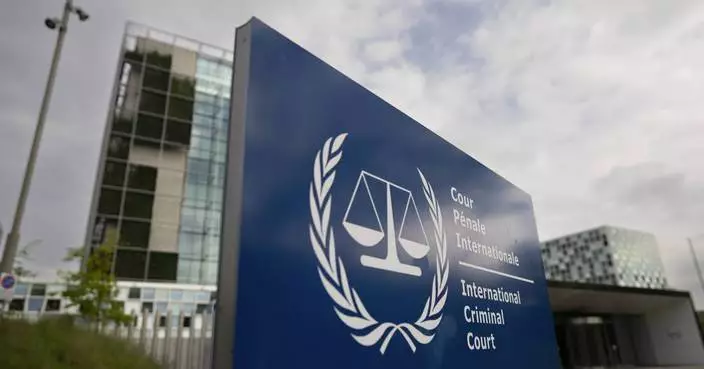BEIJING (AP) — The first scientist to publish a sequence of the COVID-19 virus in China said he was allowed back into his lab after he spent days locked outside, sitting in protest.
Zhang Yongzhen wrote in an online post on Wednesday, just past midnight, that the medical center that hosts his lab had “tentatively agreed” to allow him and his team to return and continue their research for the time being.
“Now, team members can enter and leave the laboratory freely,” Zhang wrote in a post on Weibo, a Chinese social media platform. He added that he is negotiating a plan to relocate the lab in a way that doesn’t disrupt his team’s work with the Shanghai Public Health Clinical Center, which hosts Zhang’s lab.
Zhang and his team were suddenly told they had to leave their lab for renovations on Thursday, setting off the dispute, he said in an earlier post that was later deleted. On Sunday, Zhang began a sit-in protest outside his lab after he found he was locked out, a sign of continuing pressure on Chinese scientists conducting research on the coronavirus.
Zhang sat outside on flattened cardboard in drizzling rain, and members of his team unfurled a banner that read “Resume normal scientific research work," pictures posted online show. News of the protest spread widely on Chinese social media, putting pressure on local authorities.
In an online statement Monday, the Shanghai Public Health Clinical Center said that Zhang’s lab was closed for “safety reasons” while being renovated. It added that it had provided Zhang’s team an alternative laboratory space.
But Zhang responded the same day his team wasn’t offered an alternative until after they were notified of their eviction, and the lab offered didn’t meet safety standards for conducting their research, leaving his team in limbo.
Zhang’s dispute with his host institution was the latest in a series of setbacks, demotions and ousters since the virologist published the sequence in January 2020 without state approval.
Beijing has sought to control information related to the virus since it first emerged. An Associated Press investigation found that the government froze domestic and international efforts to trace it from the first weeks of the outbreak. These days, labs are closed, collaborations shattered, foreign scientists forced out and some Chinese researchers barred from leaving the country.
Zhang’s ordeal started when he and his team decoded the virus on Jan. 5, 2020, and wrote an internal notice warning Chinese authorities of its potential to spread — but did not make the sequence public. The next day, Zhang’s lab was ordered to close temporarily by China’s top health official, and Zhang came under pressure from the authorities.
Foreign scientists soon learned that Zhang and other Chinese scientists had deciphered the virus and called on China to release the sequence. Zhang published it on Jan. 11, 2020, despite a lack of permission from Chinese health officials.
Sequencing a virus is key to the development of test kits, disease control measures and vaccinations. The virus eventually spread to every corner of the world, triggering a pandemic that disrupted lives and commerce, prompted widespread lockdowns and killed millions of people.
Zhang was awarded prizes overseas in recognition for his work. But health officials removed him from a post at the Chinese Center for Disease Control and Prevention and barred him from collaborating with some of his former partners, hindering his research.
Still, Zhang retains support from some in the government. Though some of Zhang’s online posts were deleted, his sit-in protest was reported widely in China’s state-controlled media, indicating divisions within the Chinese government on how to deal with Zhang and his team.
“Thank you to my online followers and people from all walks of life for your concern and strong support over the past few days!” Zhang wrote in his post Wednesday.

Buildings in the Shanghai Public Health Clinical Center stand near the entrance of the compound in Shanghai, China, Tuesday, April 30, 2024. Zhang Yongzhen, the first scientist to publish a sequence of the COVID-19 virus, staged a sit-in protest after authorities locked him out of his lab at the center. (AP Photo/Dake Kang)
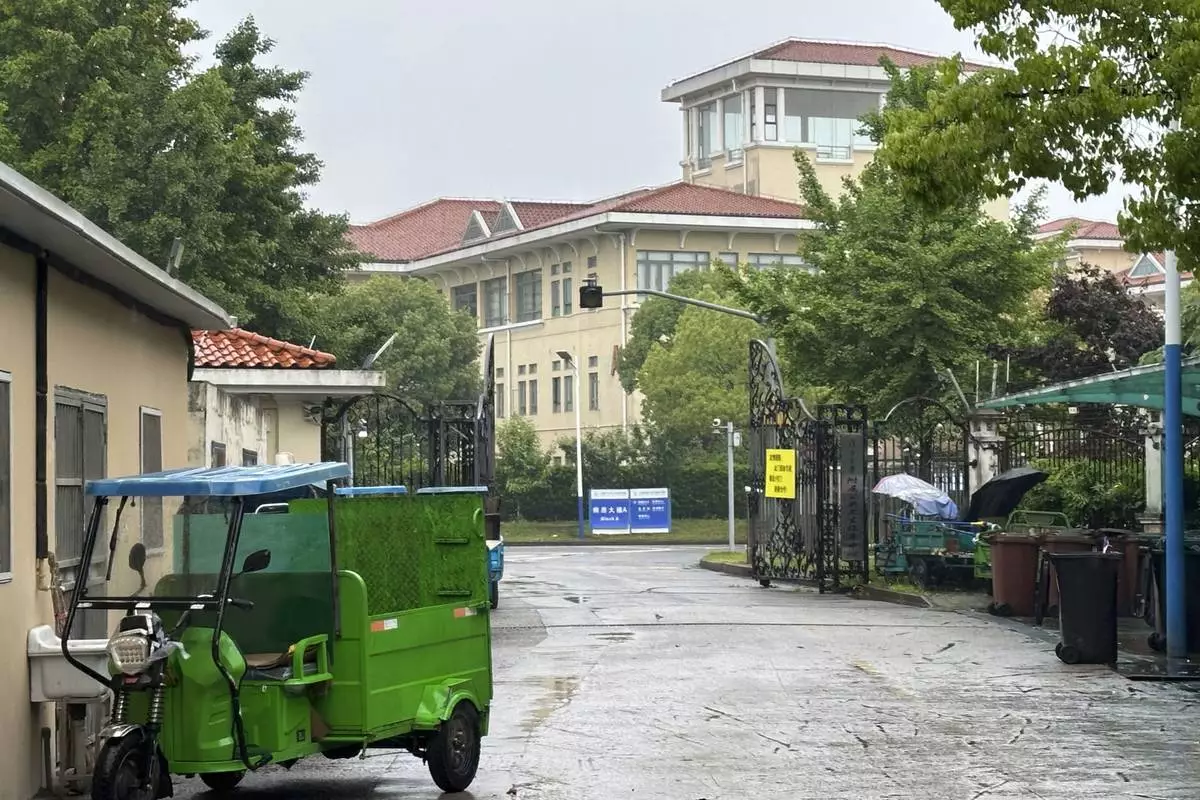
Buildings in the Shanghai Public Health Clinical Center stand near the entrance of the compound in Shanghai, China Tuesday, April 30, 2024. Zhang Yongzhen, the first scientist to publish a sequence of the COVID-19 virus, staged a sit-in protest after authorities locked him out of his lab at the center. (AP Photo/Dake Kang)
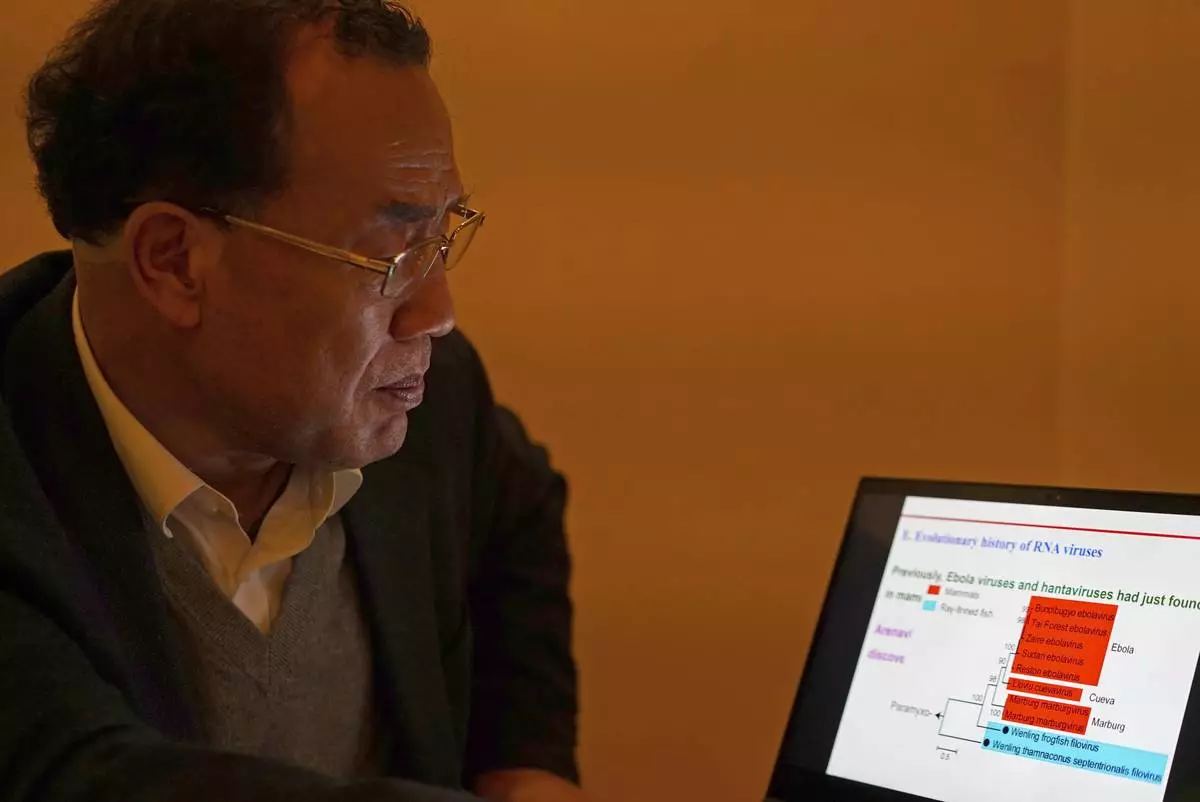
Zhang Yongzhen, the first scientist to publish a sequence of the COVID-19 virus, looks at a presentation on his laptop in a coffeeshop in Shanghai, China on Dec. 13, 2020. Zhang was staging a sit-in protest after authorities locked him out of his lab. Zhang wrote in an online post on Monday, April 29, 2024, that he and his team were suddenly notified they were being evicted from their lab, the latest in a series of setbacks, demotions and ousters since he first published the sequence in early January 2020.(AP Photo/Dake Kang)

Virologist Zhang Yongzhen, the first scientist to publish a sequence of the COVID-19 virus, walks down a street in Shanghai, China on Dec. 13, 2020. Zhang was staging a sit-in protest after authorities locked him out of his lab. Zhang wrote in an online post on Monday, April 29, 2024, that he and his team were suddenly notified they were being evicted from their lab, the latest in a series of setbacks, demotions and ousters since he first published the sequence in early January 2020.(AP Photo/Dake Kang)
GREENFIELD, Iowa (AP) — Powerful storms that rolled through the Midwest spun up multiple tornadoes, including a fierce twister that smashed through a small Iowa town Tuesday, carving a bleak landscape of destroyed homes and businesses, toppled trees, smashed cars and widely strewn debris and causing an unknown number of injuries.
Iowa State Patrol spokesman Sgt. Alex Dinkla said multiple people were injured in Greenfield, a town of about 2,000 around 55 miles (88.5 kilometers) southwest of Des Moines, and there was a lot of damage in town. He didn’t know the extent of the injuries.
In the aftermath of the storm, parts of Greenfield appeared devastated. Mounds of broken wood, branches, car parts and other debris littered lots where homes once stood. Cars lay busted and bent while damaged houses sat skewed against the gray and overcast sky. Trees stood — barely — bereft of branches or leaves.
Multiple tornadoes were reported throughout the state, and one also apparently took down several 250-foot (76 meters) wind turbines. Des Moines, Iowa, television station KCCI-TV showed at least three wind turbines that were toppled by an apparent tornado in southwest Iowa, and at least one was in flames with black smoke pluming from the bent structure.
Wind farms are built to withstand tornadoes, hurricanes and other powerful winds. According to the U.S. Department of Energy, turbines are designed shut off when winds exceed certain thresholds, typically around 55 mph (88.5 kph). They also lock and feather their blades, and turn into the wind, to minimize the strain.
The Adair County Health System hospital in Greenfield was damaged in the storm, but Mercy One spokesman Todd Mizener said he had no further details. The hospital is affiliated with Mercy One, and officials were on their way to Greenfield to assess the damage.
Mary Long, the owner of Long’s Market in downtown Greenfield, said she rode out the storm at her business in the community’s historic town square, which largely escaped damage. Long said there appeared to be widespread damage on the east and south sides of town.
“I could hear this roaring, like the proverbial freight train, and then it was just done,” she said.
Camille Blair said the Greenfield Chamber of Commerce office where she works closed around 2 p.m. ahead of the storm. She emerged from her home to describe widespread damage and scattered debris.
“There’s a pretty significant roof damage to several houses that I know will need whole new roofs," she said. "And I can see from my house it kind of went in a straight line down the road.”
In far southwestern Iowa, video posted to social media showed a tornado just northwest of Red Oak. Further east and north, the National Weather Service issued multiple tornado warnings for areas near the towns of Griswold, Corning, Fontanelle and Guthrie Center, among others.
Iowa was already braced for severe weather after the National Weather Service’s Storm Prediction Center gave most of the state a high chance of seeing severe thunderstorms with the potential for strong tornadoes. Des Moines public schools ended classes two hours early and canceled all evening activities ahead of the storms.
Earlier in the day, residents to the west in Omaha, Nebraska, awoke to weather sirens blaring and widespread power outages as torrential rain, high winds and large hail pummeled the area. The deluge of more than 5 inches (12.7 centimeters) of rain in less than two hours flooded basements and submerged cars. Television station KETV showed firefighters arriving to rescue people from vehicles.
In Illinois, dust storms forced authorities to shut down stretches of two interstates due to low visibility. Winds gusts of between 35 mph (56 kph) and 45 mph (74 kph) hit the McLean area, according to National Weather Service meteorologist Chuck Schaffer.
“There is no visibility at times,” state police posted on X, formerly Twitter.
The storms followed days of extreme weather that have ravaged much of the middle section of the country. Strong winds, large hail and tornadoes swept parts of Oklahoma and Kansas late Sunday, damaging homes and injuring two in Oklahoma.
Another round of storms Monday night raked Colorado and western Nebraska and saw the city of Yuma, Colorado, blanketed in hail the size of baseballs and golf balls, turning streets into rivers of water and ice. Front-end loaders were used to move half-foot deep (1.83 meters deep) hail Tuesday.
Last week, deadly storms hit the Houston area in Texas, killing at least seven. Those storms Thursday knocked out power to hundreds of thousands for days, leaving those Texans in the dark and without air conditioning during hot and humid weather. Hurricane-force winds reduced businesses and other structures to debris and shattered glass in downtown skyscrapers.
Tuesday's storms were expected to bring much of the same high winds, heavy rain and large hail to Minnesota and part of northern Missouri, said Bob Oravec, lead forecaster with the National Weather Service.
He said the system is expected to turn south on Wednesday, bringing more severe weather to parts of Texas, Oklahoma, Arkansas and southern Missouri.
—-
McFetridge reported from Des Moines, Iowa, and Beck reported from Omaha, Nebraska. Associated Press writers Steve Karnowski in Minneapolis, Josh Funk in Omaha and Colleen Slevin in Denver contributed to this report.

This image provided by JJ Unger, shows hail damage to the window of vehicle, Monday night, May 20, 2024, in Yuma, Colo. Residents in the small city in northeastern Colorado were cleaning up Tuesday after hail the size of baseballs and golf balls pounded the community, with heavy construction equipment and snow shovels being used to clear hail that had piled up knee-deep the night before. (JJ Unger via AP)
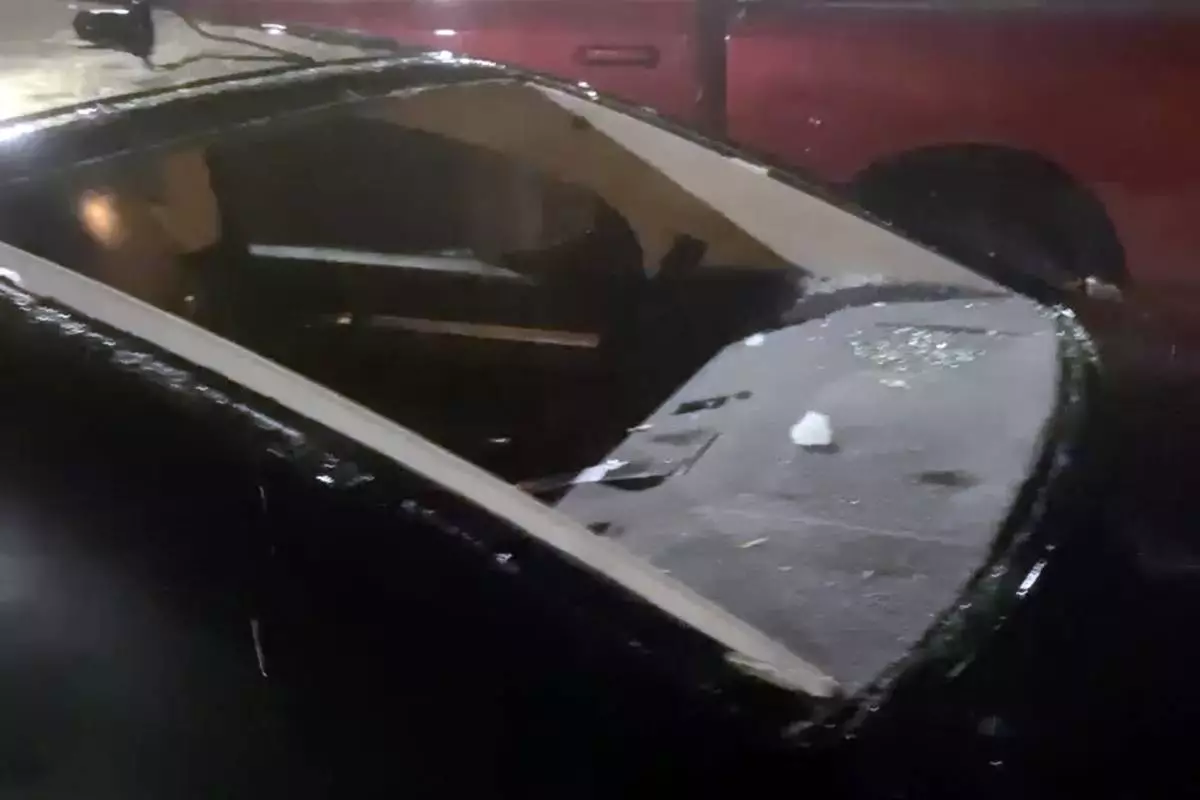
This image taken from video provided by JJ Unger, shows hail damage to a window of vehicle, Monday night, May 20, 2024, in Yuma, Colo. Residents in the small city in northeastern Colorado were cleaning up Tuesday after hail the size of baseballs and golf balls pounded the community, with heavy construction equipment and snow shovels being used to clear hail that had piled up knee-deep the night before. (JJ Unger via AP)

This image provided by JJ Unger, shows hail surrounding a vehicle, Monday night, May 20, 2024, in Yuma, Colo. Residents in the small city in northeastern Colorado were cleaning up Tuesday after hail the size of baseballs and golf balls pounded the community, with heavy construction equipment and snow shovels being used to clear hail that had piled up knee-deep the night before. (JJ Unger via AP)

Workers clean out shattered glass at the Wells Fargo building as clean up from the previous week's storm continues in downtown Houston, Monday, May 20, 2024. The city closed off streets in a six-block exclusion zone downtown, from McKinney to Polk and from Smith to Travis to ease traffic around the area where broken glass and debris are prevalent. (Brett Coomer/Houston Chronicle via AP)
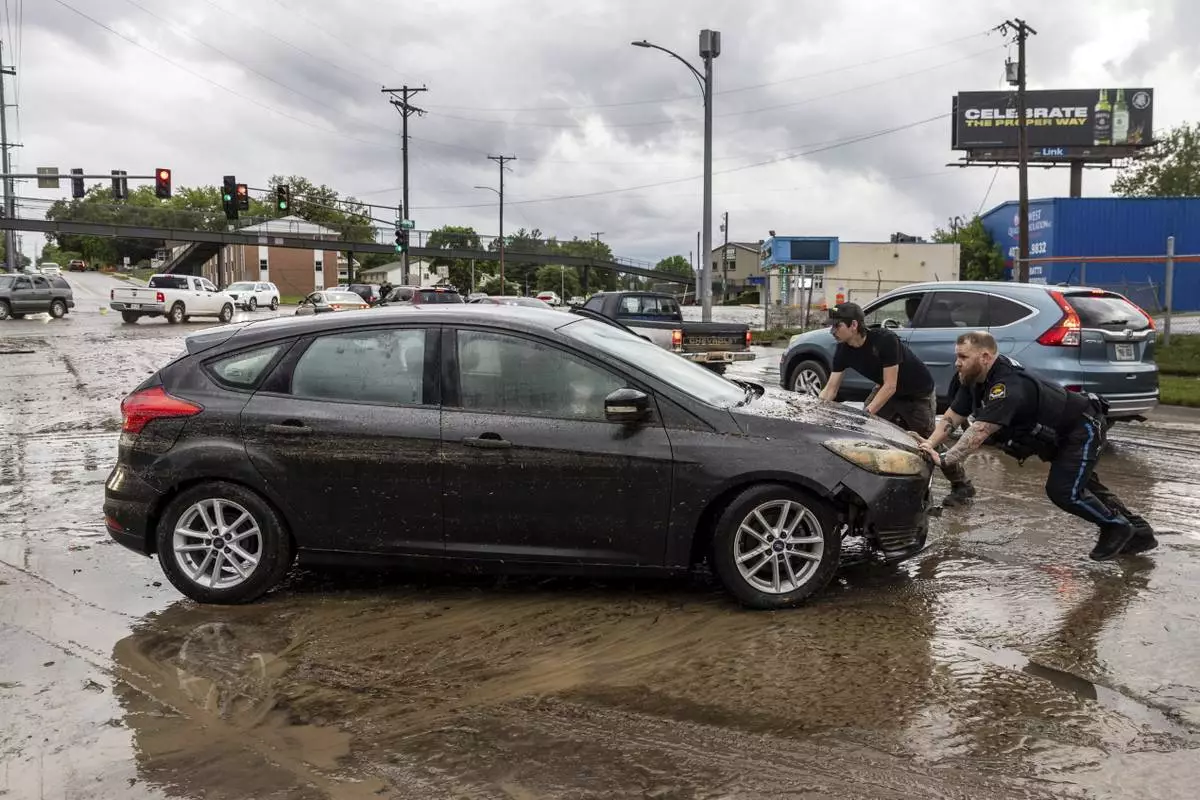
A police officer and an employee of nearby Dingman's Collision Center push a car that had been caught in flood waters in Omaha, Neb. on Tuesday, May 21, 2024 (Chris Machian /Omaha World-Herald via AP)
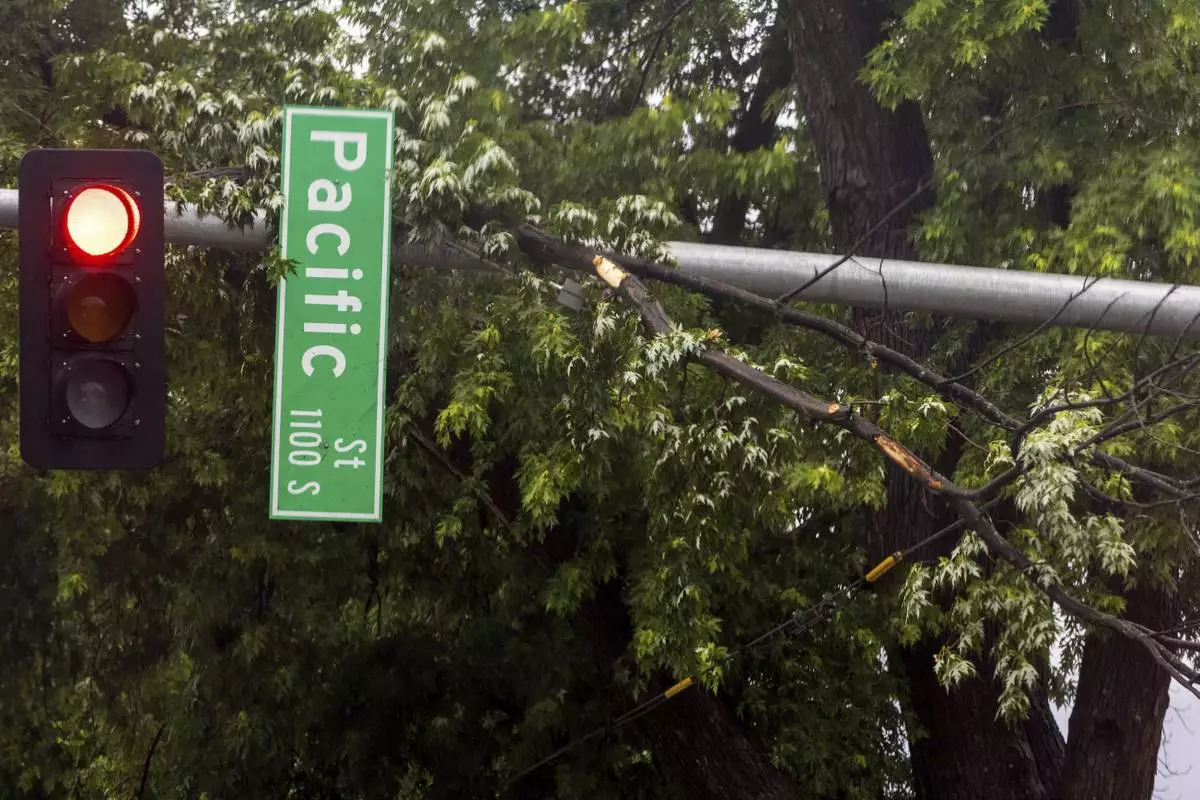
An early-morning storm knock tree branches onto the Pacific Street sign on 42nd Street in Omaha, Neb. on Tuesday, May 21, 2024. (Chris Machian /Omaha World-Herald via AP)
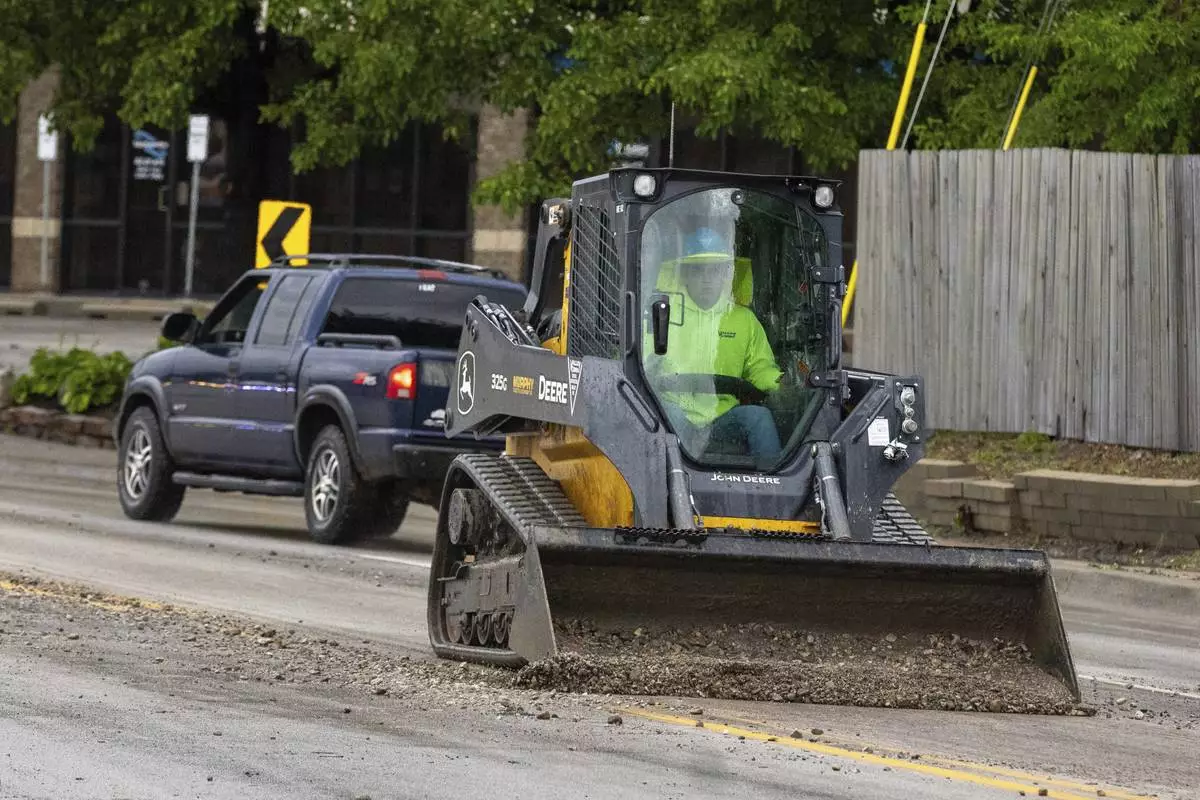
Heavy machinery clears debris washed out by flooding from nearby construction sites in Omaha, Neb. on Tuesday, May 21, 2024. (Chris Machian /Omaha World-Herald via AP)
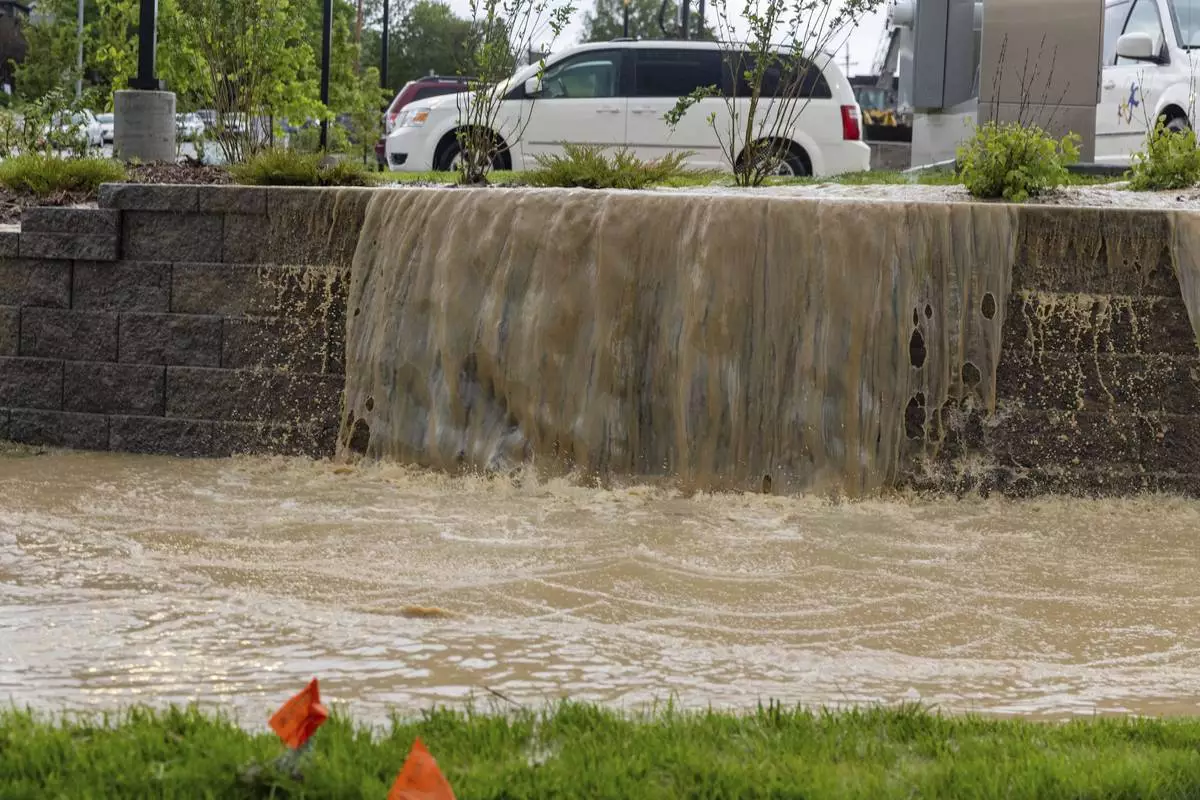
Water pours out of a parking lot onto the ground in Omaha, Neb. on Tuesday, May 21, 2024. (Chris Machian /Omaha World-Herald via AP)















